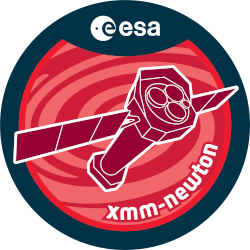

| Proposal ID | 094059 |
| Title | XUV-induced photochemistry in the planet orbiting HD106315 |
| Download Data Associated to the proposal | https://nxsa.esac.esa.int/nxsa-sl/servlet/data-action-aio?obsno=0940590201 |
| DOI | https://doi.org/10.57780/esa-rmj9ldm |
| Principal Investigator, PI | Dr John Pye |
| Abstract | We will use XMM in concert with JWST/MIRI to characterize the impact of XUVradiation on the chemical composition of the hot H/He-rich atmosphere of HD106315c, orbiting a bright F5V star in a 21.06-day orbit. MIRI will probe, viaSO2, the planetary atmosphere???s sulfur reservoir, to verify the impact of XUVradiation on the upper-atmosphere chemical composition. Also, XMM will quantifythe X-ray and UV broad-band fluxes impinging on the atmosphere that are r^antfor atmospheric heating and loss. These observations are crucial to understandthe different effects of planet formation, atmospheric loss and photochemistryon the upper-atmosphere chemical composition of this Super-Neptune-mass planet,and augment a small but important dataset of exoplanets having both JWST and XUV data. |
| Publications | No publications found for current proposal! |
| Instrument | EMOS1, EMOS2, EPN, OM, RGS1, RGS2 |
| Temporal Coverage | 2024-06-19T09:46:08Z/2024-06-20T01:06:08Z |
| Version | 21.23_20231215_1101 |
| Mission Description | The European Space Agencys (ESA) X-ray Multi-Mirror Mission (XMM-Newton) was launched by an Ariane 504 on December 10th 1999. XMM-Newton is ESAs second cornerstone of the Horizon 2000 Science Programme. It carries 3 high throughput X-ray telescopes with an unprecedented effective area, and an optical monitor, the first flown on a X-ray observatory. The large collecting area and ability to make long uninterrupted exposures provide highly sensitive observations. Since Earths atmosphere blocks out all X-rays, only a telescope in space can detect and study celestial X-ray sources. The XMM-Newton mission is helping scientists to solve a number of cosmic mysteries, ranging from the enigmatic black holes to the origins of the Universe itself. Observing time on XMM-Newton is being made available to the scientific community, applying for observational periods on a competitive basis. |
| Creator Contact | https://www.cosmos.esa.int/web/xmm-newton/xmm-newton-helpdesk |
| Date Published | 2025-07-09T00:00:00Z |
| Last Update | 2025-08-04 |
| Keywords | XMM-Newton, OM, RGS, EPIC, X-ray, Multi-Mirror, SAS |
| Publisher And Registrant | European Space Agency |
| Credit Guidelines | European Space Agency, Dr John Pye, 2025, 'XUV-induced photochemistry in the planet orbiting HD106315', 21.23_20231215_1101, European Space Agency, https://doi.org/10.57780/esa-rmj9ldm |